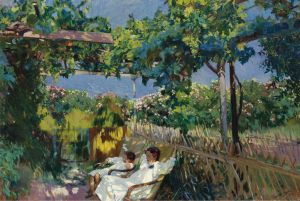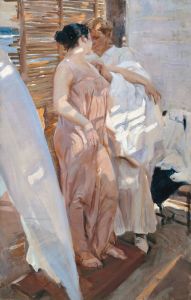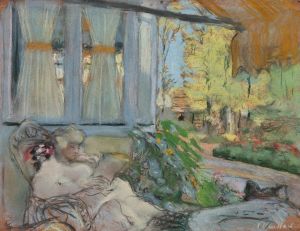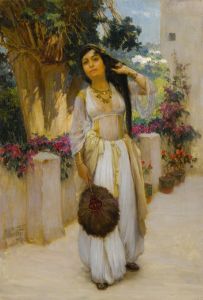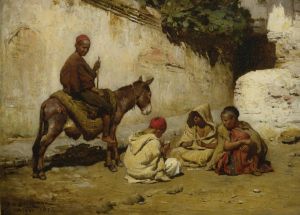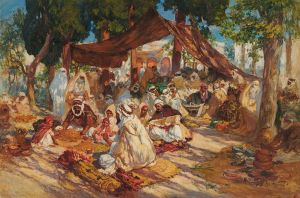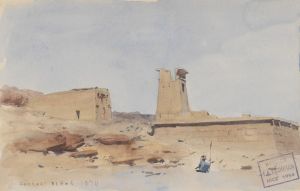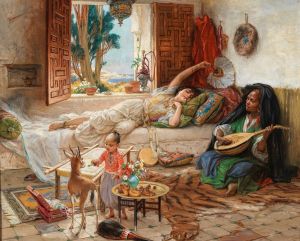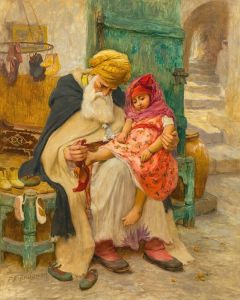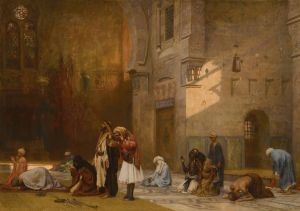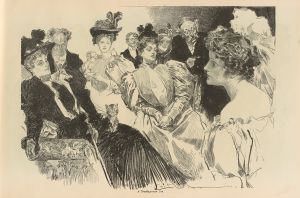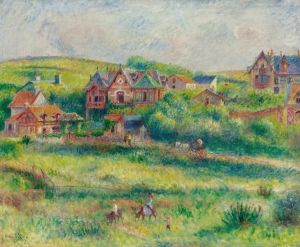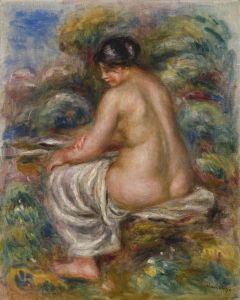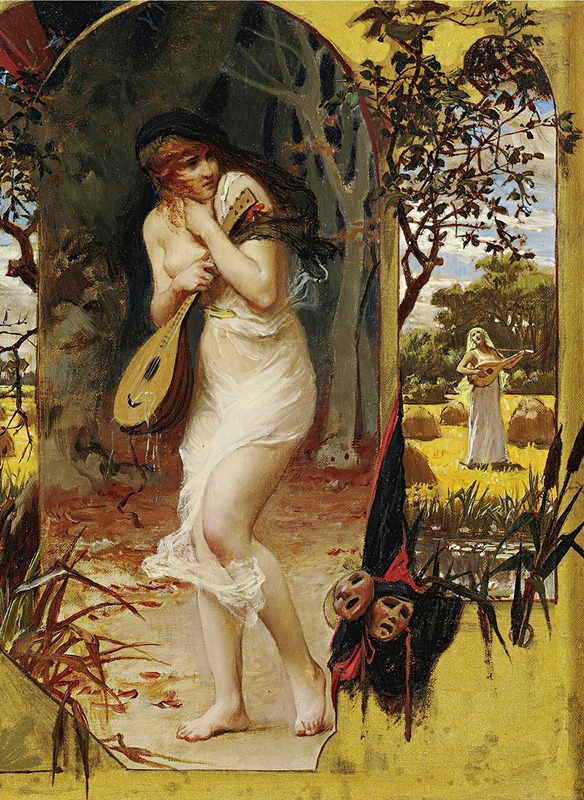
La Cigale
A hand-painted replica of Frederick Arthur Bridgman’s masterpiece La Cigale, meticulously crafted by professional artists to capture the true essence of the original. Each piece is created with museum-quality canvas and rare mineral pigments, carefully painted by experienced artists with delicate brushstrokes and rich, layered colors to perfectly recreate the texture of the original artwork. Unlike machine-printed reproductions, this hand-painted version brings the painting to life, infused with the artist’s emotions and skill in every stroke. Whether for personal collection or home decoration, it instantly elevates the artistic atmosphere of any space.
Frederick Arthur Bridgman was an American artist known for his detailed and vibrant depictions of Orientalist themes. Born in Tuskegee, Alabama, in 1847, Bridgman moved to France in the 1860s, where he became associated with the Orientalist movement, a genre that romanticized and depicted the cultures of North Africa, the Middle East, and Asia. Bridgman studied at the École des Beaux-Arts in Paris and worked under the tutelage of the renowned artist Jean-Léon Gérôme, who was a significant influence on his style and subject matter.
One of Bridgman's notable works is "La Cigale," which translates to "The Cicada" in English. This painting is a fine example of Bridgman's skill in capturing the essence of his subjects with meticulous attention to detail and vibrant use of color. "La Cigale" draws inspiration from the fable "The Ant and the Grasshopper" by Jean de La Fontaine, which tells the story of a carefree cicada who sings all summer but finds herself in trouble when winter arrives, having failed to prepare for the harsh season.
In "La Cigale," Bridgman portrays a young woman, presumably representing the cicada, in a moment of leisure and contemplation. The painting is characterized by its rich textures and the play of light, which highlights the woman's delicate features and the luxurious fabrics of her attire. Bridgman's use of light and shadow adds depth to the composition, creating a sense of warmth and tranquility.
The setting of the painting is typical of Bridgman's Orientalist works, featuring elements that suggest an exotic locale. The background may include architectural details or landscapes that evoke the regions Bridgman often depicted, although specific details about the setting in "La Cigale" are not extensively documented. Bridgman's ability to blend realism with romanticism is evident in this work, as he captures both the physical beauty of the subject and the underlying narrative of the fable.
"La Cigale" reflects Bridgman's fascination with storytelling through art, a common theme in his body of work. His paintings often explore narratives from literature, mythology, and everyday life, rendered with a keen eye for detail and a deep appreciation for the cultures he portrayed. Bridgman's work, including "La Cigale," is celebrated for its technical proficiency and its ability to transport viewers to distant lands and times.
Throughout his career, Bridgman exhibited his works in prestigious venues, earning acclaim and recognition for his contributions to the Orientalist genre. His paintings are held in various collections, both public and private, and continue to be studied and appreciated for their artistic and cultural significance.
"La Cigale" remains a testament to Bridgman's artistic legacy, showcasing his mastery of composition, color, and narrative. As with many of his works, it invites viewers to reflect on the themes of the fable and the beauty of the world Bridgman so vividly captured.





